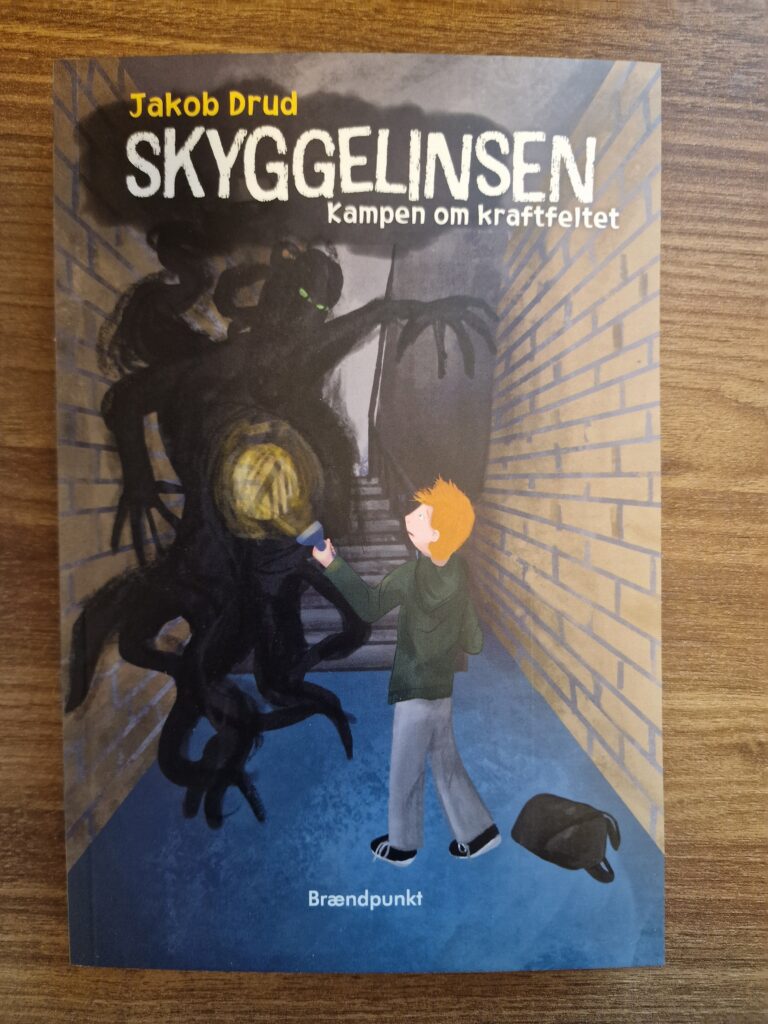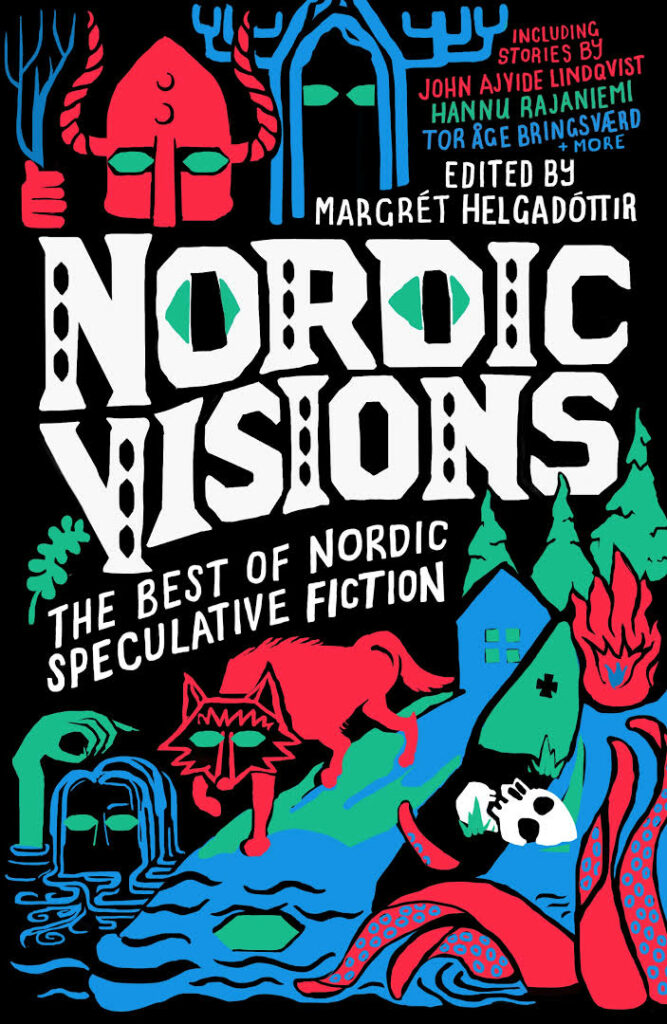I’m constantly trying to figure out what kind of science fiction and fantasy stories are published right now, and which magazines would be a good match for my stories. For that purpose, I’ve been reading a lot of short stories. It seems a good idea to know your markets, and a lot of magazines have this sage advice in their guidelines: Read our magazine to find out what we’re publishing.
For this article, I’ve delved into one of my all-time favorite markets, Daily Science Fiction. DSF delivers free short stories to your inbox every weekday – five days a week, all year. Michele and Jonathan have kept the magazine going for many, many years, and I’ve read memorable stories there from old SF names and newcomers to the genre. I’ve even been lucky enough to publish two stories with them, Monsters Big and Small and Spores of Freedom.
In the beginning they published short stories up to 10,000 words, but right now they’ve put in a word cap at 1,500 words. I believe that the choice is at least partly financial. Recently, they sent out a call for more subscribers to keep the magazine going, and if there’s a magazine around that’s worth $15 a year, it’s DSF. Sure, you can get it for free, but then it may not be around for long. And really, fifteen United States Thalers for around 240 stories is a bargain. Go subscribe!
What they say about themselves
Rule number one about what to submit to a magazine is, follow the guidelines. DSF doesn’t say much, though:
Daily Science Fiction (DSF) is a market accepting speculative fiction stories from 100 to 1,500 words in length. By this we mean science fiction, fantasy, slipstream, etc. We will consider flash series–three or more flash tales built around a common theme.
This is the broadest possible invitation to submit, and I suspect the editors like it that way. This interview goes a bit deeper but it’s from 2011, and things have changed. The magazine started out publishing longer stories, but with the current word cap at 1,500 words, looking at what they actually publish seems a good idea.
What I’ve read
I’ve moved in the past month and not had much time for reading or writing, so it’s been nice to grab a piece of flash fiction from time to time. I’ve looked closely at the DSF stories in September and October, but I recall reading many others over the years. The stories mentioned here were picked by random from days when I could find the time.
I’ve also discovered that it’s hard to accurately sum up very short stories. I’ll aim to keep the description vague rather than spoilerish, but the mission is still to capture the tone and gist of the story in a sentence or three.
The stories
The Modern Woman’s Guide to Navigating Your Transformation Into an Eldritch Horror of the Deep by Caroline Diorio
The story is just that: a guide to women transforming into eldritch horrors. How to sleep better, how to manage eating while you have strange cravings, what to do about sex. Advice column meets Lovecraftian fiction.
Iron Priest by Marie Vibbert
The priest in question blesses killbots condemned to recycling. However, not all killbots are the carefree, unquestioning selves they used to be. The resulting story is an interesting look at free will and the consequences of choice. This one’s recommended.
Literary Cocktails by Preston Grassmann
In this bar, you get a book with your drink — good for easing newly erased minds. The world hinted at in this story is dystopian, and the hints themselves drive the story forward. The literary quotes add a certain bookish charm if you’re into that sort of thing.
Choices by Mari Ness
Would you rather have a beautiful bride in the light of day and hideous at night or the other way round? A classic fairy tale question. The answer depends on the man faced with the question, and that provides the new angle to an old dilemma.
Ten Secret Things You Don’t Know About Closet Monster by Susan Taitel
This story is what the title says it is. However, the list isn’t just comments on closet monsters, but on the world in general. The list also presents both a situation, a problem, and a resolution of sorts. In short, it’s a progressing story disguised as a list. This approach to list stories is typical of DSF, but I hadn’t quite read one like this one before.
Mothers and Sons by George Nikolopoulos
A future resistance movement sends the mother of a dictator back in time to kill her son. There are special rules for time travel, and those rules set the story a little apart from others of the same subgenre.
Out, Damned Virus by Henry Herz
This story about the current pandemic takes a page out of Macbeth.
Useful Guinevere and the Bio-Mechanical Dragons of Neptunias by Tina Connolly
Guinevere deNeptunias hunts dragons for a living on a planet set up by her ancestors to resemble the fairy tales of forgotten times. Usually things go as planned, but this time, of course, there’s a snag… The story comments on a lot of dragon hunting/princess/dark lord tropes. The story has a lot more worldbuilding than many of the other stories.
Intergalactic Negotiations by Joshua Fagan
The trouble of negotiating with an aggressive species when you don’t know what they want. Our MC has to find a solution. A classic science fiction setup with a problem and a solution.
By the Power of My Swipe by Laila Amado
When the setting is a stormy castle, my associations to the word ‘swipe’ in the title were those of a swinging blow or an animal claw. Well, in this case, it’s an evil wizard who has been doing the swiping of his own kind. A fantasy comment on… well, let’s not spoil that. But that comment is the charm of the story. (This is not a review, of course, but I recommend this story.)
Familiar Ground by Shannon Fay
Family expectations can be tough to handle. In this case, the main character, Rina, has a magical reaction to the problem.
Crash Test Dummy by M. Thomas Lumby
The main character looks back on mistakes in their relationships, muses about being human, or near enough, or not near enough. It’s the kind of story where the context is only revealed in the last paragraph, shining a light on the rest of the story.
How to be a Hero by Rosanna Griffin
This is a humorous take on the ‘hero’ trope. Rather than being a story with a plot, it’s a kind of how to/pep talk to would-be heroes on how to follow tradition. DSF likes this kind of stories that subvert tropes, so it’s quite typical for them.
The Judas Goat by K.S. O’Neill
This SF story starts out with the information that people used tame goats to locate wild goats on the Galapagos islands. The story itself hinges on the context of this information.
Reduce, Reuse… by Mike Blackwelder
The author says about this story: “I was watching caterpillars eating my basil […] and wondered what my backyard would look like hundreds of years after a comet strike.” It’s a classically constructed story that presents a main character with a problem, how they tackle it, and what the consequences are. It’s also short (less than a page), so brevity does not automatically equate experimentation at DSF. (I recommend reading this story.)
Chronicle of the Mender by Alex Shvartsman
The Mender can repair anything. We follow the routines of his project, both in his work and in his personal life. The magic in this story is of a symbolic kind connected to the people in the story, and it pulls at the reader’s heartstrings.
Arrows of Conquest by Marcus Vance
A praise of the soldiers we sent into interstellar combat. This story is carried by the worldbuilding and special circumstances of conducting war across vast distances.
The Capes We Wear by Avra Margariti
A superhero story, but the story is really about letting the world know who we really are. The focus is on socio-psychological implications for the main character.
Evacuation: Earth by Andrew Dunn
What to do when Earth is too poisonous to live on? How do we get away? There’s a solution, but this is quite a pessimistic take on the future. (Goes well with Lampshades on Fire by Modest Mouse.)
The Apple by Marlaina Cockcroft
A retelling of Snow White with a focus on the dysfunctional relationship between Snow White and the Queen.
Empy by Melissa Mead
A science fiction tale of Empy, Magic Pot, who cooks for the starship travelers. What happens, though, when a new planet and environment starts influencing Empy? How will Empy continue serving the Travelers? Science fiction with a conscious machine and a very down-to-earth problem – worth the read.
Narcoleptic Fruit by Paul Jessup
This is, most of all, an idea story: What happens when you eat the narcoleptic fruit? The ideas explored here are interesting; both the opportunities and the risks.
Assisted Suicide by Brian Wells
Keith is phoned up by his credit card app, which infers, based on his recent purchases, that he’s about to murder his wife. The science of financial monitoring provides a premise for this SF tale, but it reads more like a thriller/mystery kind of story to me.
Glitch by Wendy Nikel
The story’s main character teleports people for a living. It’s a mind-numbing, undemanding job until one day there’s a glitch that forces the main character to rethink her life.
Enchanted Objects: Buy-Sell-Trade Group, YOU MUST BE APPROVED TO JOIN by Tina Connolly
Fairy tale heroines/villains try to get rid of enchanted or cursed objects online. The group takes on a life of its own as the posts and discussions influence the posters.
What are their stories like?
DSF has always been a hard magazine for me to pinpoint. It’s hard to say exactly what kind of stories they want, what tone they prefer, and what topics, tropes, and themes the editors go for.
Part of this is because they publish flash fiction. Flash is a really good way to experiment with form as well as content, and their stories often do that. There are list stories (Ten Secret Things You Don’t Know About Closet Monster), comments on Shakespeare/the pandemic (Out, damned virus), Advice columns (The Modern Woman’s Guide…). Narcoleptic Fruit and The Judas Goat focus much more on exploring an idea than they do on action, even though things happen in both stories.
In the fantasy department DSF have a penchant for new takes on old tropes (How to be a Hero, Choices and Useful Guinevere and the Bio-Mechanical Dragons of Neptunias) work on tropes, while both Enchanted Objects… and The Apple give us a new take on known stories.
Fantasy takes on modern phenomena are also popular at DSF, not just in this selection but in general. The best example is By the Power of My Swipe, while Familiar Ground shows us magic appearing in a family drama. The Capes We Wear is an identity story for our age.
The short form also lends itself well to stories that only come fully into focus in the last line or paragraph, and which either explains or twists our understanding of the story until that point. Crash Test Dummy, Chronicle of the Mender, Literary Cocktails and Arrows of Conquest all fall under that headline.
Finally, quite a lot of stories run relatively straight with a beginning, middle and end. This goes for some of the stories mentioned above, but also for stories like Glitch, Assisted Suicide, Empy, Evacuation: Earth, Iron Priest, Mothers and Sons and Intergalactic Negotiations. While these stories don’t exactly experiment with form, they are nevertheless very different in theme, tone and content.
The Secret Handshake?
“So how to get a story into Daily Science Fiction?” you ask. I wish I could tell you, but the truth is that after reading a lot of stories, the editors’ selection criteria still elude me.
Your story could easily be a comment on life and society today, or it could be the exploration of new ideas. Found an interesting form for your story? Send it to DSF. Got one with a beginning, middle, and ending? Send that along as well. (Just not right away – they ask for one story at a time only.)
In general, I suspect there’s a fair bit of ‘we know it when we see it’ about Michele and Jonathan’s acceptance policies. But after reading their stories on and off for many years, I’m willing to bet they’re aiming to get as wide a mix of stories as possible. If you read the magazine and send them a kind of story they haven’t published yet, I believe they’ll take that over a type they’re familiar with. But again, certain themes and forms come up time and again, so if you can find a new take on a familiar variation (list stories, for example), you might find your story under serious consideration. Either way, you’ll probably have to read the magazine yourself. It’s by no means a chore, though, as you’ll be sure to find lots of stories to your liking and get to know the magazine along the way.



